The Magical Storyteller: Diedrick Brackens
Contemporary American artist Diedrick Brackens has a knack for telling stories old and new, weaving them deftly into his intricate, hand-crafted textiles. Based in Los Angeles, Brackens draws on the traditions of textiles as a powerful and direct means of communication, using them to reflect on themes surrounding identity, race and sexuality that impact his own daily experiences as a queer Black man. His tactile and visually arresting artworks often hide within them painfully raw truths about the nature of today’s society, which, as Bracken observes, can still be rife with discriminations, exclusions and inequalities. He says, “I embody a lot of identities that happen to be under threat in society and sometimes this means making work about things that happen to deal with death, pain, and danger. I am simply telling stories that resonate with my experience – there is also joy and beauty.”
Brackens was born in a small town in Texas, and his early years were itinerant as he travelled frequently from one army base to another, following his father’s work. From high school onward Brackens’ family settled in Texas for a longer spell, and he remained here throughout his high school and college years. He studied a BFA at the University of North Texas, where he graduated in 2011, and an MFA in textiles from California College of the Arts in San Francisco until 2014. It was during his student years that Brackens first discovered the wonders of creating his own woven works of art. He says, “I discovered weaving before I found content. I fell in love with the medium and the attendant processes in college.”
Over time, Brackens familiarised himself with the history of weaving, which allowed him to consolidate and conceptualise his practice, as he explains, “As I learned more about the craft and its historical significance, I realized it was a way to talk about the issues I cared about, relative to movements of enslaved people, the shaping of American culture through African and European aesthetics, and the production of cotton in the country among other things.” He adds, “I am… interested in the long history of weaving. Folks weave on every continent, so there are all these different possibilities, stories, and textile traditions that I get to learn about, explore, and be inspired by.”
Brackens has since gone on to incorporate a range of narrative references, from current news affairs to magical folklore tales, into his art. Some of his most recent tapestries reflect on raw, painfully topical issues including the Black Lives Matter movement and the Dakota Access Pipeline, which he approaches with great subtlety, weaving together quiet partial narratives that are intricately layered with politicised references, as Black, silhouetted figures are caught in a series of active poses, often involving elements of human kinship, tenderness and interaction. Animals also appear in a variety of guises, acting as coded signifiers for themes around what he calls “sacrifice, violence, beauty, and spirituality.”
While narrative and political elements are a fundamental aspect of Brackens’ practice, abstract pattern and colour are undoubtedly important strands of his visual repertoire. He sees his geometric strips and bands of bright colour as a direct link to the textiles of the past, noting, “For me abstraction is the default language of textile making… it gives nods to weavers and traditions I’m indebted to like kente cloth, a west African weaving style, and Flemish and English tapestry making quilts from the American south etc.” Kente cloth, in particular, has shaped his design aesthetic with its layered strip woven appearance, and rich associations with the Black diaspora. Brackens’ fusion of abstraction and storytelling thereby blends African and European aesthetics and techniques into one, which, as he points out, can succinctly reflect back to us, “what American culture is.” More recently, Brackens has incorporated three-dimensional basket weavings into his practice which make reference to Biblical stories, and continue to reveal just how rich and diverse African American visual culture is today.





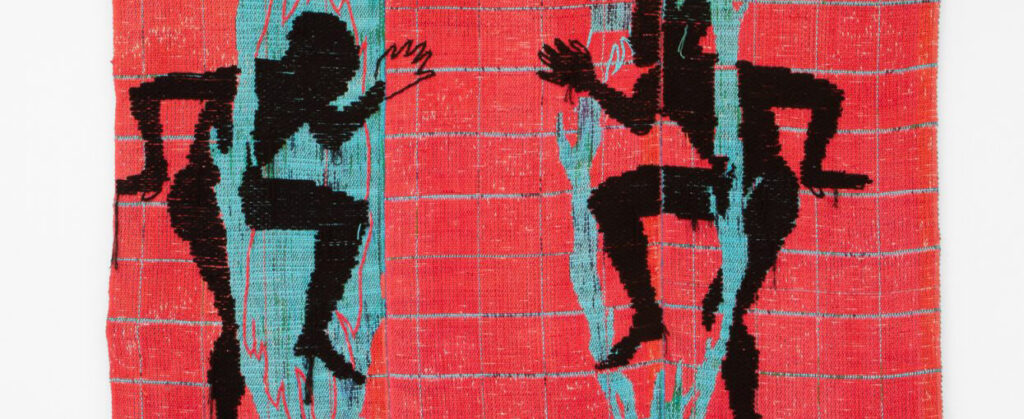
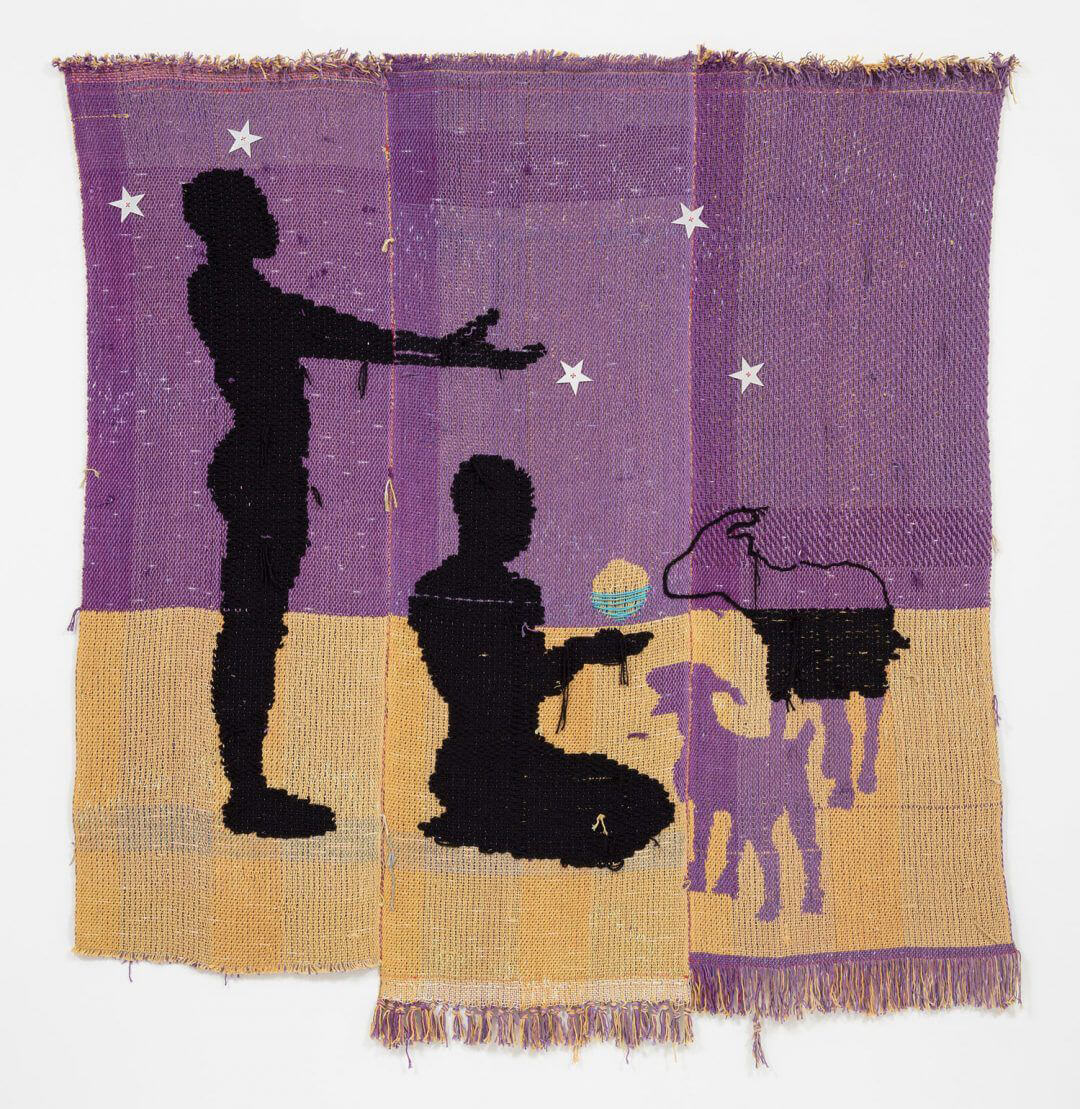
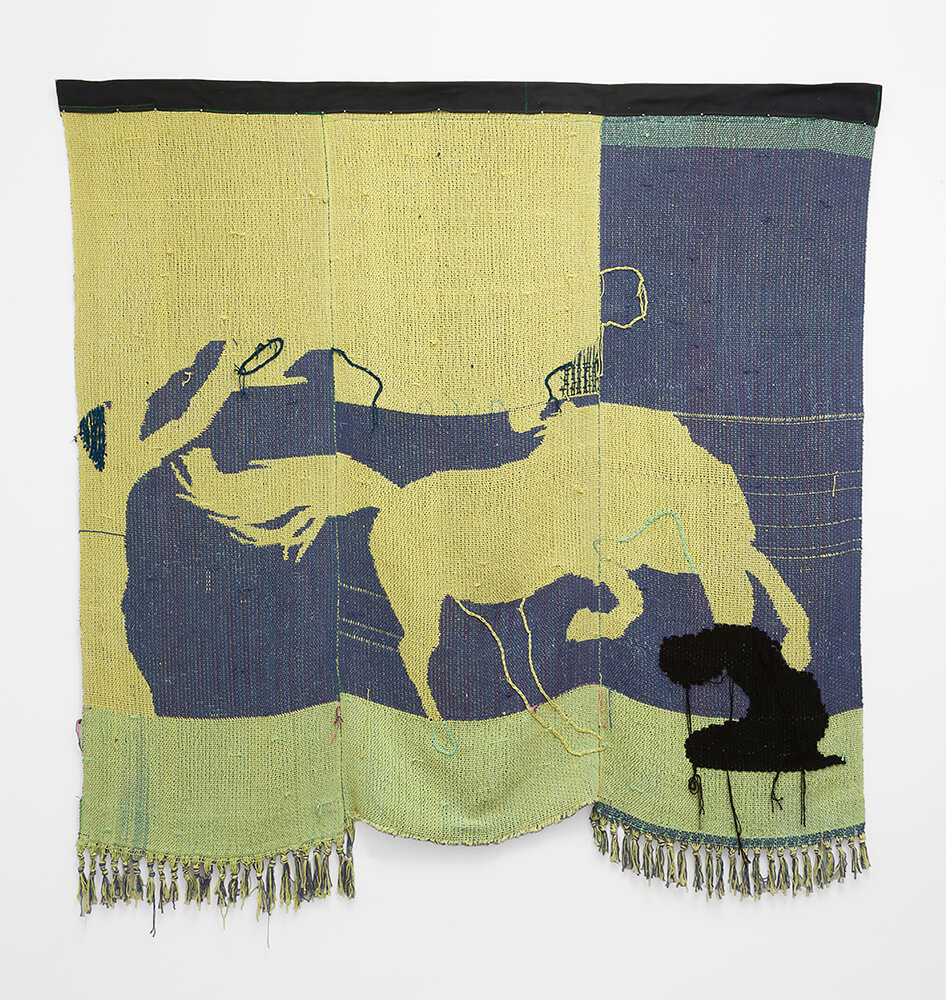
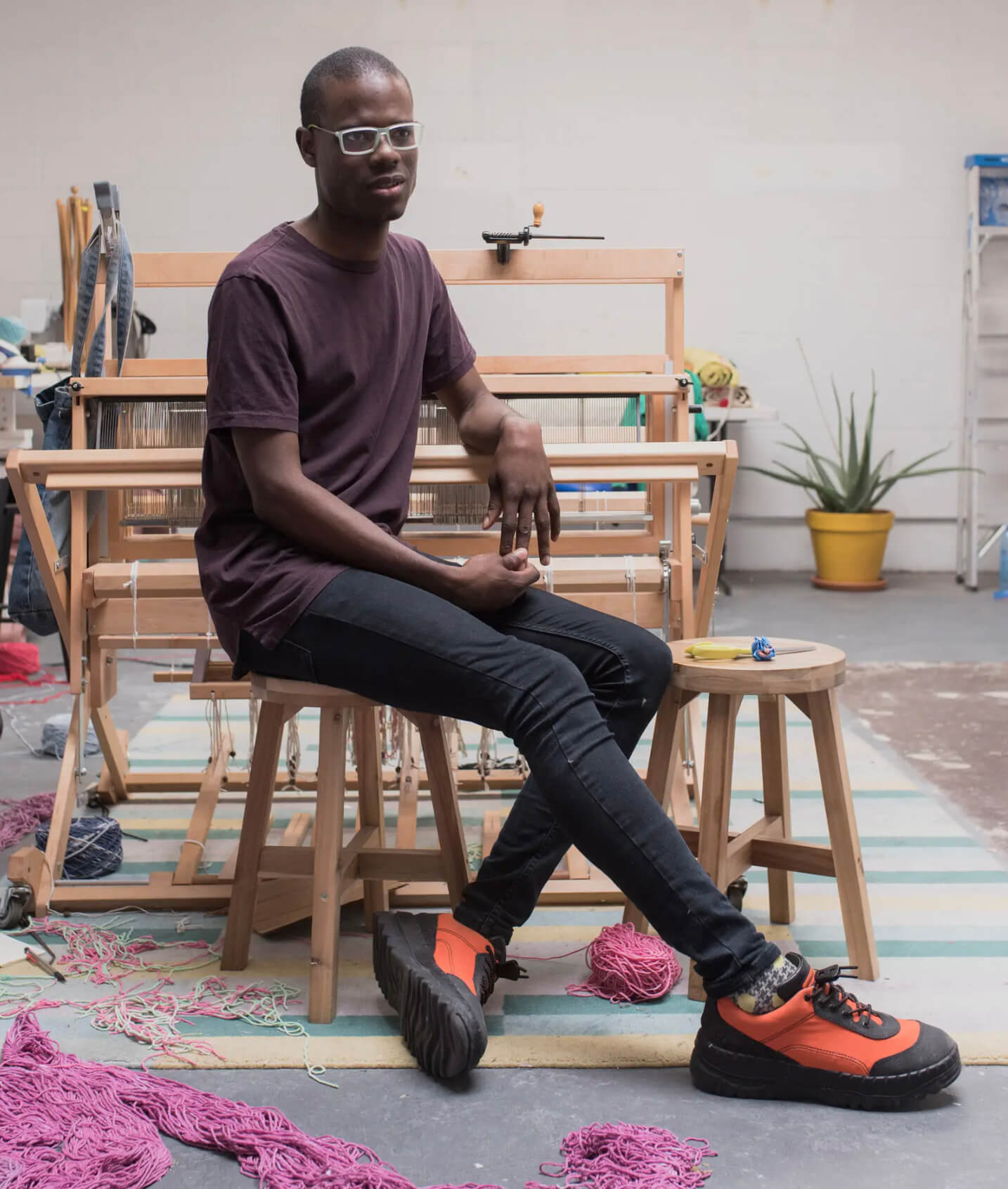
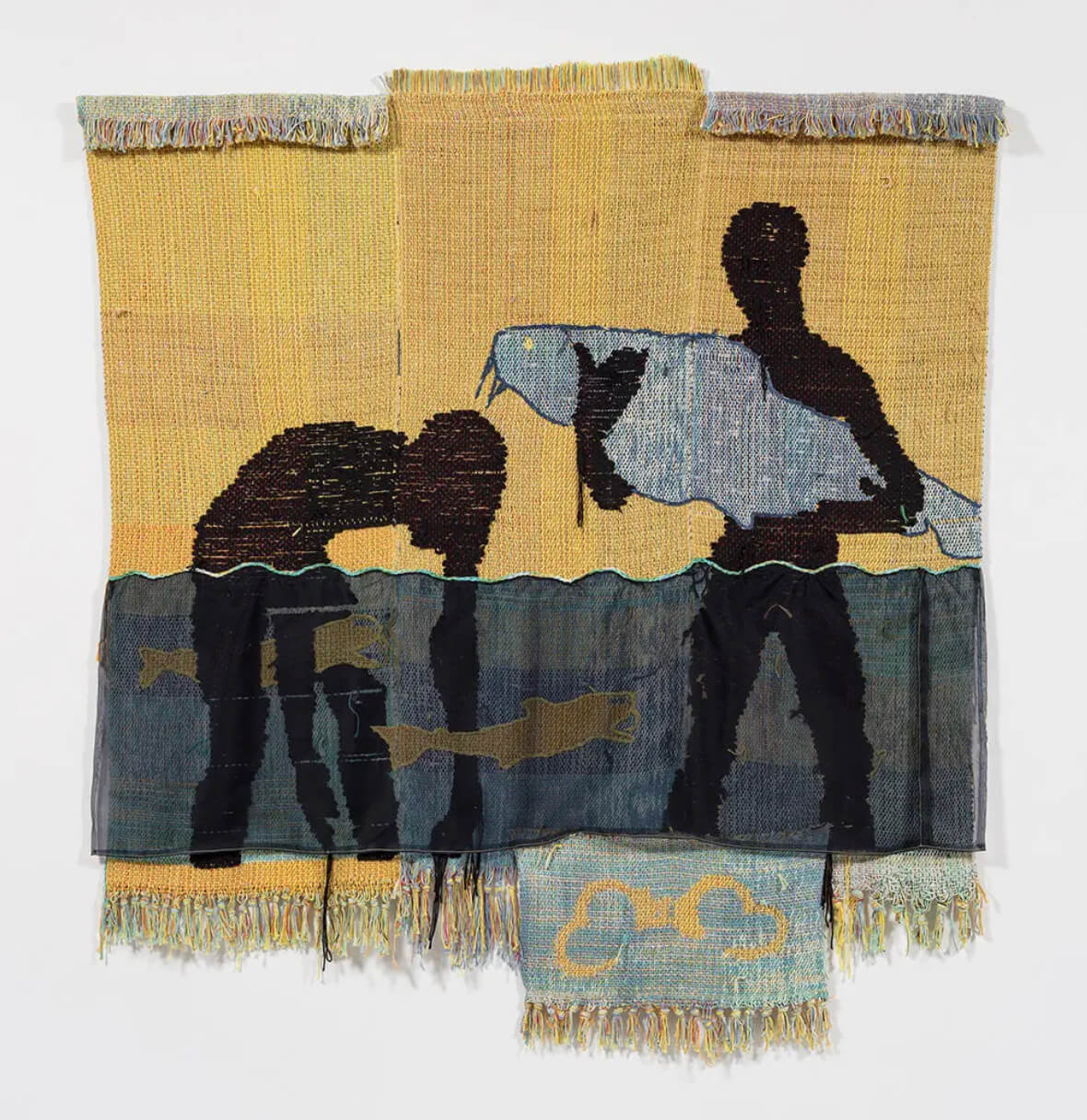
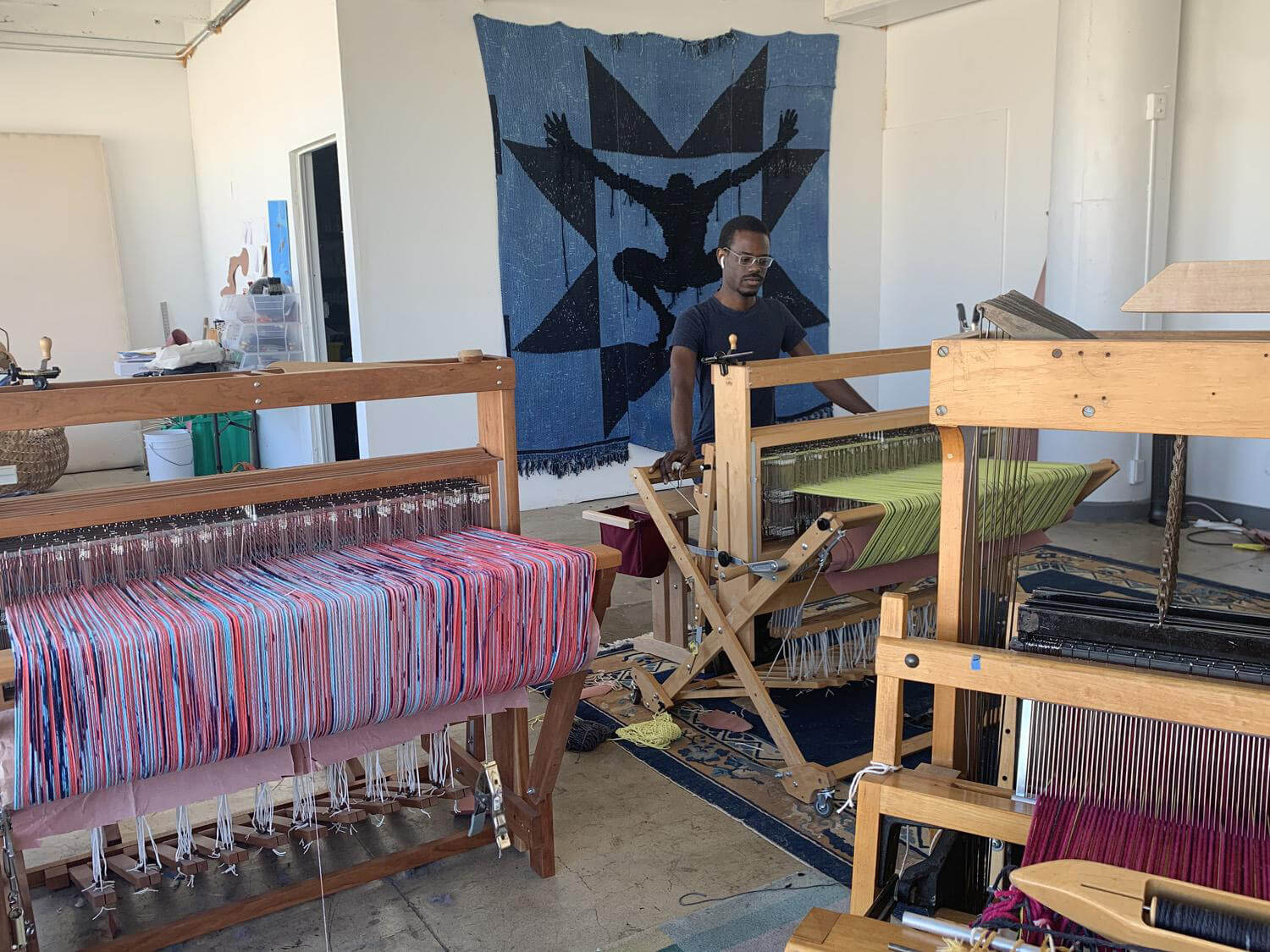







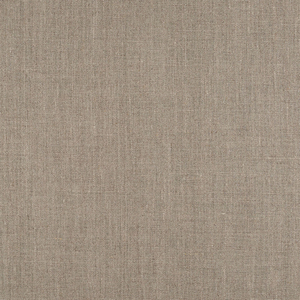

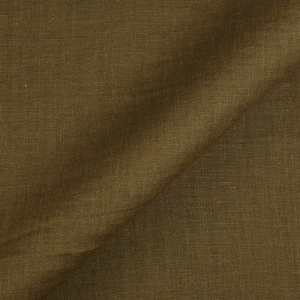


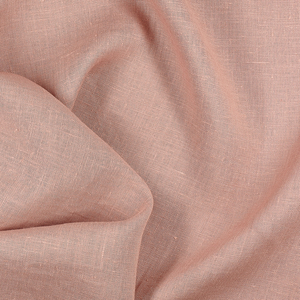




















7 Comments
Zita Christian
Rosie, I can’t thank you enough for your artist profiles. This latest, the one about Diedrick Brackens, inspires on many levels.
Pat Meyers
An amazing featured artist. Really special. Would love to see this work in person. Thank you for writing these pieces on interesting artists in our world. I read all of them.
Vicki Lang
Thank you for the wonderful article of a creative weaving artist. His pieces are fabulous.
Carol Myers
What a great article and beautiful woven pieces. Would love to see them on display! Are they shown in any gallery?
Jennifer Gwirtz
It’s so wonderful to see fiber artists being spotlit here, and Brackens in particular. As someone who came out of – and left -fine arts because of how slow this space has been to recognize textile as a legitimate art form, your articles give me hope and inspiration. I look forward to reading more! Thank you.
Melynda Huskey
I never fail to learn something new and exciting from The Thread. I really appreciate the work of curation and contextualizing that go into these posts. Thank you so much!
Mary Bradley
Rosie, I absolutely love your articles and always look forward to seeing the next one. Thank you for all your research and discovery of such talented textile artists.